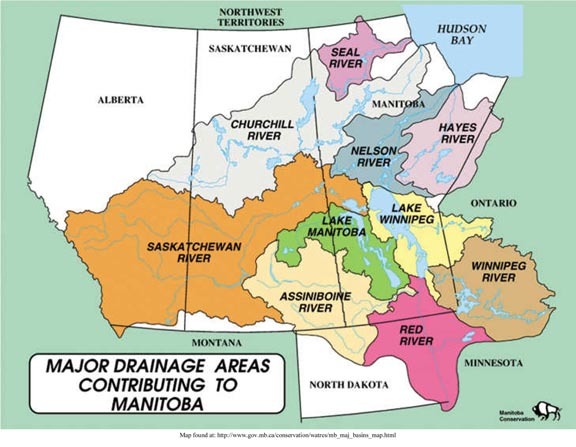Watershed Resources
Watershed Introductory Videos
 What is a Watershed?
What is a Watershed?
A shed that holds water? Nope. Everyone in the world lives in a watershed. Watch this short video to learn what a watershed really is.
 Why Should You Care About Our Watersheds?
Why Should You Care About Our Watersheds?
Protecting our watersheds is more important than ever. Fresh water and healthy soils are limited and as our world population grows we all need to do more to preserve and improve the land, air and water.
 Nutrien Watershed Contest
Nutrien Watershed Contest
Youth around the world are turning their environmental ideas into solutions. The Caring for Our Watersheds program asks the question, “What can you do to improve your watershed?” Answer the question and take action in your community!
Water Nexus Videos
This video series is generously provided by Alberta WaterPortal Society.

Download map in PDF form here.
Did you Know…
- Over 70% of the earth is covered in water, but only 3% of the earth?s water is fresh water and only 0.3% of this is useable to humans.
- The average person needs 30 to 50 litres of fresh water a day for drinking, cooking, washing and sanitation. However, the average North American uses more than 300 litres of water a day! Compare this to the average African, who makes do with just 10 litres a day.
- Riparian areas are important to the health of a watershed. Water in a stream that does not have riparian vegetation will flow fast, which causes soil erosion from stream banks. A healthy river with lots of plants will curve and bend across the land and there will be less erosion.
About Water & Developing Countries
Source: Centre for Affordable Water and Sanitation Technology (CAWST). Access on October 9, 2009.
- 1.1 billion people in the world do not have access to safe water, roughly one-fifth of the world?s population.
- 2.6 billion people in the world do not have access to adequate sanitation, about two-fifths of the world?s population.
- Some 4,900 people die every day from diseases associated with lack of access to safe drinking water, inadequate sanitation and poor hygiene ? equivalent to 20 jumbo jets crashing every day.
- The average distance that women in Africa and Asia walk to collect water is 6 km.
- One flush of your toilet uses as much water as the average person in the developing world uses for a whole day?s washing, cleaning, cooking and drinking.
- Comparative costs: In Europe $11 billion is spent each year on ice cream; in USA and Europe, $17 billion is spent on pet food; in Europe $105 billion is spent annually on alcoholic drinks, ten times the amount required to ensure water, sanitation and hygiene for all.
Resources
Lifestyle Calculator:
How much land area does it take to support your lifestyle? Take this quiz to find out your Ecological Footprint, discover your biggest areas of resource consumption, and learn what you can do to tread more lightly on the earth.